Building Rise

What measures should be taken to prevent fires in high-rise buildings ?
High-rise buildings face unique fire safety challenges due to their height, occupant density, and complex systems. To prevent fires in these structures, various measures can be taken, including engineering solutions like smoke control systems, fire-resistant construction, and automatic sprinkler systems. Administrative actions such as developing a fire safety plan, conducting training and drills, and implementing clear signage and emergency lighting are also crucial. Additionally, legislative measures, including compliance with building codes and insurance requirements, play a vital role in ensuring fire safety. By combining these approaches, high-rise buildings can significantly reduce fire risks and protect occupants.

Is it safer to stay in a high-rise building during an earthquake or evacuate ?
The article discusses the safety considerations for staying in or evacuating a high-rise building during an earthquake. It outlines the advantages and disadvantages of both options, such as structural integrity, risk of falling debris, and access to emergency services. The decision should be based on factors like the severity of the earthquake, the building's structural integrity, and available safety precautions. Being prepared with an emergency kit and knowledge of proper safety procedures is crucial for ensuring well-being during these events.

What is the relationship between groundwater depletion and sea-level rise ?
Groundwater depletion and sea-level rise are interconnected environmental issues that share a relationship with climate change. Both phenomena have significant implications for global ecosystems and human societies, including reduced water availability, coastal flooding, saltwater intrusion, and habitat loss. The connection between groundwater depletion and sea-level rise lies primarily in their shared relationship with climate change and its effects on hydrological cycles. Addressing these challenges together within a broader context of climate change adaptation and sustainable resource management is crucial for developing effective strategies to mitigate their impacts on our environment and society.

How have building energy efficiency standards evolved over time ?
The evolution of building energy efficiency standards has been significant over the years, with a focus on reducing energy consumption and environmental impact. Early beginnings saw little consideration for energy consumption, leading to high utility bills and greenhouse gas emissions. The rise of energy conservation in the 1970s led to the development of the first building energy efficiency standards, focusing on measures such as improved insulation and efficient heating and cooling systems. The advent of green buildings in the 1990s brought new standards that minimized environmental impact through the use of renewable energy sources and sustainable materials. Technology has played a significant role in improving energy efficiency, with advances such as smart thermostats and LED lighting. Looking to the future, there is likely to be a greater emphasis on reducing energy consumption in buildings, leading to stricter standards and the development of new technologies. Overall, building energy efficiency standards have evolved to become an essential part of modern building design and construction.
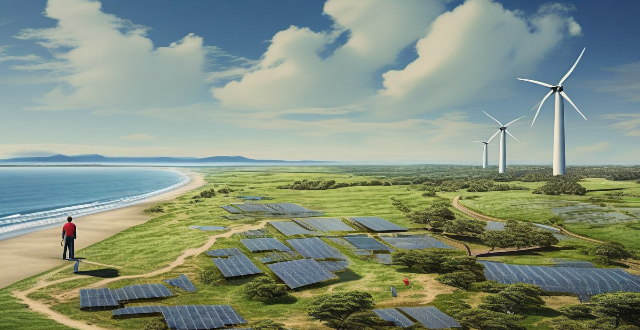
How do climate-related risks such as sea level rise and temperature increase affect energy production and distribution ?
Climate change poses significant risks to the energy sector, affecting both production and distribution. These risks include reduced power plant efficiency due to higher temperatures, changes in energy demand patterns, disruptions to infrastructure from sea level rise and extreme weather events, shifts in preferred energy sources, the need for adaptation and resilience efforts, and potential regulatory and policy changes aimed at reducing emissions and promoting renewables. Addressing these challenges requires a comprehensive strategy that encompasses both adaptation and mitigation measures to ensure a sustainable and resilient energy future.

What are the key factors in designing a safe and stable building structure ?
The text provides a comprehensive overview of the key factors that must be considered when designing a safe and stable building structure. It emphasizes the importance of site selection and analysis, foundation design, structural system selection, material selection, and construction quality control in ensuring the well-being of inhabitants and protecting against natural disasters. The text also highlights the need for proper workmanship, inspections, testing, and maintenance to maintain the integrity of the structure over time. Overall, the text serves as a valuable resource for architects, engineers, and builders involved in the design and construction of safe and stable buildings.
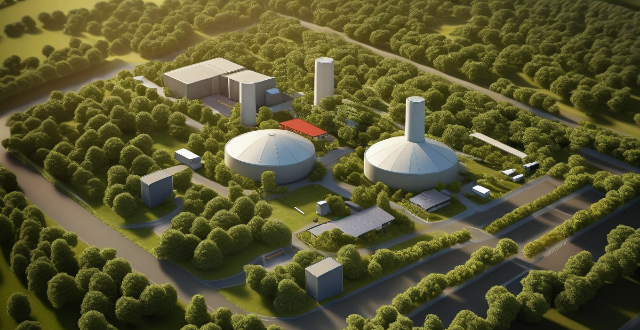
How do building energy efficiency standards impact the environment ?
**Summary:** Building energy efficiency standards positively impact the environment by reducing greenhouse gas emissions, conserving natural resources, enhancing air quality, and promoting energy innovation. These standards lead to more energy-efficient buildings, reduced dependence on fossil fuels, cleaner air, and advancements in sustainable technologies.

Can you explain the concept of a living building in the context of ecological design ?
The text introduces the concept of a "living building" in ecological design, emphasizing sustainable materials, energy efficiency, and water conservation. It outlines key features such as using renewable and non-toxic materials, maximizing natural light and ventilation, and promoting biodiversity through green spaces. Benefits include reduced environmental impact, long-term economic savings, improved health for occupants, and enhanced social interaction. The text concludes that living buildings offer significant advantages for people and the planet, suggesting their increasing importance in future built environments.

What are the current building energy efficiency standards ?
The text discusses building energy efficiency standards, which are regulations and guidelines designed to reduce energy consumption. These standards promote sustainable development, reduce greenhouse gas emissions, and improve indoor air quality. The text lists seven key areas for improving energy efficiency: insulation and air tightness, heating, ventilation, and air conditioning systems, lighting systems, renewable energy sources, water efficiency, building materials and construction practices, and energy management and monitoring. Each area includes specific strategies and technologies that can be employed to increase energy efficiency.

How will urban planning adapt to the rise of autonomous vehicles ?
As autonomous vehicles (AVs) become more common, urban planning must evolve. Road design can be rethought, with fewer lanes and more space for pedestrians and cyclists. Cities can promote ridesharing by incentivizing the use of shared AVs, reducing traffic congestion and emissions from transportation. Infrastructure specifically for AVs, such as dedicated lanes and charging stations, should be built to ensure their safe and efficient operation. Smart mobility should also be promoted, encouraging the use of multiple modes of transportation. By making these changes, cities can create more efficient, sustainable, and livable environments.

In what ways do building codes contribute to overall structural safety ?
Building codes are regulations that ensure the design, construction, and maintenance of buildings adhere to certain standards, promoting structural safety. They prevent the use of substandard materials and shoddy workmanship, require buildings to withstand environmental factors, mandate fire-resistant materials and safety features, address accessibility and egress issues, and encourage energy efficiency. Overall, building codes contribute significantly to creating safer, more resilient structures.

What are the best exercises for building muscle at the gym ?
The article discusses the best exercises for building muscle at the gym, including free weights, machines, and bodyweight exercises. Free weight exercises like squats, deadlifts, and bench press target multiple major muscle groups for overall strength and muscle growth. Machine exercises such as leg press, lat pulldown, and seated row allow for isolation of specific muscles while still allowing heavy lifting. Bodyweight exercises including push-ups, pull-ups, and squat jumps require no equipment and can be done anywhere for convenient muscle building.

How does the design of a building impact its energy efficiency ?
This text discusses the impact of building design on energy efficiency, focusing on orientation and layout, insulation and airtightness, windows and doors, lighting and electrical systems, and HVAC systems. It highlights that a well-designed building can significantly reduce energy consumption and improve indoor comfort, while a poorly designed one can lead to high energy costs and discomfort for occupants. The text provides various strategies and considerations for each aspect of building design to achieve energy efficiency.

What are the impacts of extreme weather events on building designs ?
Extreme weather events significantly impact building designs, affecting structural integrity, energy efficiency, and sustainability. To withstand high winds, heavy rains, and seismic activity, buildings must be designed with increased resilience using advanced materials and construction techniques that enhance their structural integrity. Improved foundations are also necessary to support the weight of buildings and resist forces exerted by extreme weather conditions. Energy efficiency is another area impacted by extreme weather events. Buildings must be designed to minimize heat loss or gain during extreme temperatures, requiring enhanced insulation and proper sealing of windows and doors. Incorporating renewable energy sources such as solar panels and wind turbines can reduce reliance on non-renewable energy sources and make buildings more sustainable. Sustainability is also a crucial factor in building designs affected by extreme weather events. Green roofs and walls help reduce the urban heat island effect, improve air quality, provide insulation, and absorb rainfall. Water management systems, including rainwater harvesting and permeable surfaces, are essential for coping with floods and droughts. Overall, architects and engineers must consider factors such as structural integrity, energy efficiency, and sustainability when designing buildings to ensure they can withstand extreme weather conditions while minimizing their environmental impact. By incorporating advanced materials, construction techniques, renewable energy sources, green roofs and walls, and effective water management systems, we can create buildings that are both resilient and sustainable.

What is green building and why is it important for the construction industry ?
Green building is an approach to design, construction, operation, and maintenance of buildings that aims to minimize environmental impact and resource consumption throughout a building's lifecycle. It focuses on sustainability, energy efficiency, water conservation, materials selection, and indoor environmental quality. The importance of green building in the construction industry stems from environmental concerns, economic benefits, and social responsibility. Green buildings reduce carbon footprint, conserve resources, preserve biodiversity, save energy costs, have higher asset values, and promote healthier living conditions. They also set community standards for sustainable practices and help companies stay ahead of compliance requirements. Green building drives innovation in materials science, design techniques, and construction technology. Overall, green building represents a fundamental shift towards more sustainable and responsible practices within the construction industry.

What are the key factors to consider when planning an energy-efficient building project ?
The text provides a summary of key factors that should be considered when planning an energy-efficient building project. These factors include site selection and orientation, building design and construction, and energy sources and consumption. The location and orientation of the building on the site can have a significant impact on its energy efficiency, as well as the design and construction of the building itself. Consideration should also be given to the sources of energy used by the building and how that energy is consumed. By considering these key factors during the planning stages of an energy-efficient building project, it is possible to create a building that is comfortable, functional, environmentally responsible, and economically sustainable over its lifetime.

How does ecological design influence the well-being of building occupants ?
Ecological design, also known as sustainable or green design, is a method of architecture and building that focuses on reducing negative environmental impacts while improving occupant comfort and health. This design philosophy significantly affects the well-being of building occupants in various ways, from enhancing indoor air quality to fostering a connection with nature. Some key aspects through which ecological design enhances occupant well-being include: - Healthier Indoor Environment: Ecologically designed buildings often incorporate advanced ventilation systems that ensure the continuous flow of fresh, filtered air. The use of low VOC (Volatile Organic Compounds) materials reduces pollutants that can cause respiratory issues. Strategic placement of windows allows for ample natural light, reducing the need for artificial lighting and its associated energy consumption. Proper insulation and shading devices maintain comfortable temperatures without overreliance on heating and cooling systems. Orienting buildings to maximize solar gain in colder seasons and minimize it in warmer periods contributes to thermal comfort. - Increased Productivity and Comfort: Eco-friendly soundproofing materials can reduce noise pollution, creating a quieter and more focused work environment. Thoughtful layout planning can minimize noise disturbances and improve speech privacy. The use of window shades and tinting can reduce glare from excessive sunlight, ensuring visual comfort for occupants. Strategically placed reflective surfaces can bounce natural light deeper into spaces, reducing the need for bright artificial lighting. - Mental and Emotional Benefits: Incorporating elements of nature such as plants, water features, and natural materials can reduce stress and increase happiness among occupants. Providing views to the outside world, especially of natural settings, has been shown to boost mood and well-being. Ecological designs often include multi-purpose spaces that can be adapted for various activities, contributing to a sense of variety and adaptability. Designs that blur the line between indoor and outdoor spaces encourage a connection to the outdoors and can enhance mental well-being. - Long-Term Sustainability: Integrating solar panels or wind turbines can make buildings self-sufficient in energy, reducing reliance on non-renewable resources. Using durable, eco-friendly construction materials reduces the need for repairs and replacements, saving costs and reducing waste. Low Maintenance Design: Designing buildings to require minimal maintenance work ensures that they remain healthy, safe, and functional over extended periods.
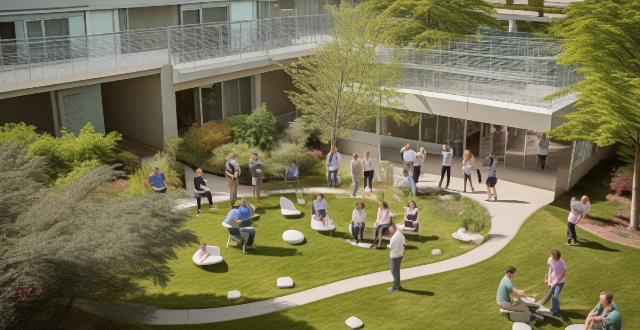
How do sports psychologists assist teams in building cohesion and improving communication ?
Sports psychologists employ strategies such as understanding team culture, building trust through group challenges and shared experiences, promoting collective goal setting, developing communication skills, resolving conflicts, and creating open dialogue channels to enhance team cohesion and improve communication. These interventions foster a synergistic team environment leading to improved performance and a healthier atmosphere.

What are the most effective ways to measure compliance with building energy efficiency standards ?
The topic summary for the text is "Measuring Compliance with Building Energy Efficiency Standards". The text discusses various methods used to assess a building's energy efficiency, including energy audits, building performance monitoring, third-party verification, benchmarking, energy efficiency ratings, and regulatory compliance checklists. Each method has its own advantages and can be used in combination to ensure that buildings meet minimum requirements for energy efficiency and contribute to reducing their environmental impact.

How can architects and designers incorporate building energy efficiency standards into their work ?
Incorporating Building Energy Efficiency Standards into Architectural and Design Work: - Understanding Energy Efficiency Standards: Research current standards, analyze local climate data. - Design Strategies for Energy Efficiency: Orientation and site layout, insulation and envelope performance, HVAC, lighting and electrical systems, water efficiency. - Material Selection: Sustainable materials, recycled content. - Technology Integration: Building automation systems, solar technology. - Collaboration and Communication: Team collaboration, client education. - Post-Occupancy Evaluation: Monitor performance, feedback loop.

How does climate change contribute to the increase in refugees and displaced persons ?
Climate change is a global phenomenon that has far-reaching consequences, including its impact on human migration. The rise in temperatures, changes in precipitation patterns, and extreme weather events are some of the factors contributing to the increase in refugees and displaced persons. One of the most significant effects of climate change is sea level rise. As global temperatures continue to rise, glaciers and ice caps melt, causing oceans to expand. This expansion leads to flooding in coastal areas, forcing people to leave their homes and seek refuge elsewhere. For example, in low-lying island nations such as Tuvalu and Kiribati, rising sea levels have already caused significant damage to infrastructure and forced many residents to relocate. Climate change also contributes to an increase in extreme weather events such as hurricanes, typhoons, floods, and droughts. These events can cause widespread damage to homes, crops, and infrastructure, leaving people with no choice but to flee their communities. For instance, Hurricane Katrina displaced over 1 million people in New Orleans in 2005, while the Syrian civil war was partially triggered by a severe drought that lasted from 2006 to 2011. Climate change affects food security by altering growing seasons and reducing crop yields. As temperatures rise and rainfall patterns become more unpredictable, farmers struggle to grow enough food to feed their families and communities. This lack of food security can lead to conflict over resources and force people to leave their homes in search of sustenance. In Sub-Saharan Africa, where agriculture is a primary source of income for many households, climate change has already caused significant declines in crop yields and increased food prices. Finally, climate change poses health risks that can contribute to displacement. Changes in temperature and precipitation patterns can lead to the spread of diseases such as malaria and dengue fever, which are transmitted by mosquitoes that thrive in warmer climates. Additionally, air pollution caused by burning fossil fuels can exacerbate respiratory illnesses such as asthma and lung cancer, making it difficult for people to live in polluted areas. In conclusion, climate change is a complex issue that affects various aspects of human life, including migration. By contributing to sea level rise, extreme weather events, food insecurity, and health risks, climate change is driving more people from their homes than ever before. Addressing this issue requires global cooperation and action to reduce greenhouse gas emissions and adapt to the changing climate.

How has technology influenced the way we consume media and entertainment ?
The influence of technology on media and entertainment consumption is vast. Technology has revolutionized the way we consume media and entertainment, from the invention of the television to the rise of streaming services. The rise of digital media, personalization and customization, on-demand content, multi-platform accessibility, and interactive experiences and augmented reality are some of the key ways in which technology has influenced our media habits. As technology continues to advance, it is likely that our consumption habits will continue to evolve as well.

How do I make sure my yeast dough rises properly ?
To ensure your yeast dough rises properly, follow these steps: check the freshness of your yeast, use warm liquids in your recipe, measure ingredients accurately, knead thoroughly but not excessively, create an optimal rising environment, allow ample time for rising, punch down and let the dough rest before shaping, be mindful of the second rise, use an oven thermometer to maintain the correct temperature, and avoid draughts and temperature fluctuations. Consistency and patience are key in achieving perfectly risen yeast dough.
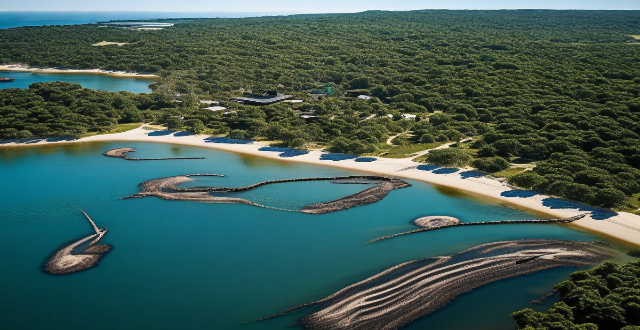
Which countries are most affected by climate refugees ?
The text discusses the issue of climate refugees, individuals displaced due to the impacts of climate change such as sea-level rise, extreme weather events, and alterations in ecosystems. It provides a detailed exploration of the nations most affected by this growing crisis, including Bangladesh, Small Island Developing States (SIDS), Nigeria, Fiji, Vietnam, Indonesia, and Pacific Nations. The countries face various challenges such as sea-level rise, cyclones and flooding, droughts, storm damage, coastal erosion, saltwater intrusion, forest fires, land subsidence, island depopulation, and resource scarcity. The text concludes that addressing this complex issue requires international cooperation, strategic planning, and innovative solutions to mitigate both the causes and effects of climate displacement.

How does sea level rise impact public health, especially in coastal areas ?
Sea level rise, driven by global warming and climate change, poses significant threats to public health in coastal areas through flooding and storm surge, waterborne diseases, environmental health hazards, mental health concerns, economic impacts, and social determinants of health. Addressing this challenge requires a multifaceted approach that includes adaptation strategies, improved infrastructure resilience, and mitigation efforts to reduce greenhouse gas emissions.
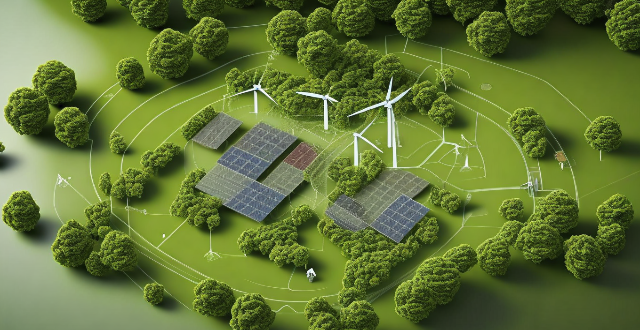
How has the rise of renewable energy affected consumer preferences and buying habits ?
The rise of renewable energy has significantly influenced consumer preferences and buying habits, including increased awareness and interest in sustainability, changes in purchasing decisions towards energy-efficient products and electric vehicles, support for green initiatives, a shift towards renewable energy service providers, and adoption of smart technology.
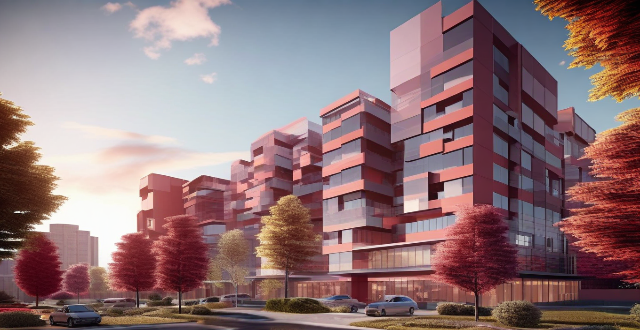
What is the role of insulation in energy-efficient buildings ?
Insulation is crucial for energy-efficient buildings, reducing heat loss and gain, improving comfort and indoor air quality, lowering energy consumption and costs, enhancing building durability and longevity, and meeting energy efficiency standards.